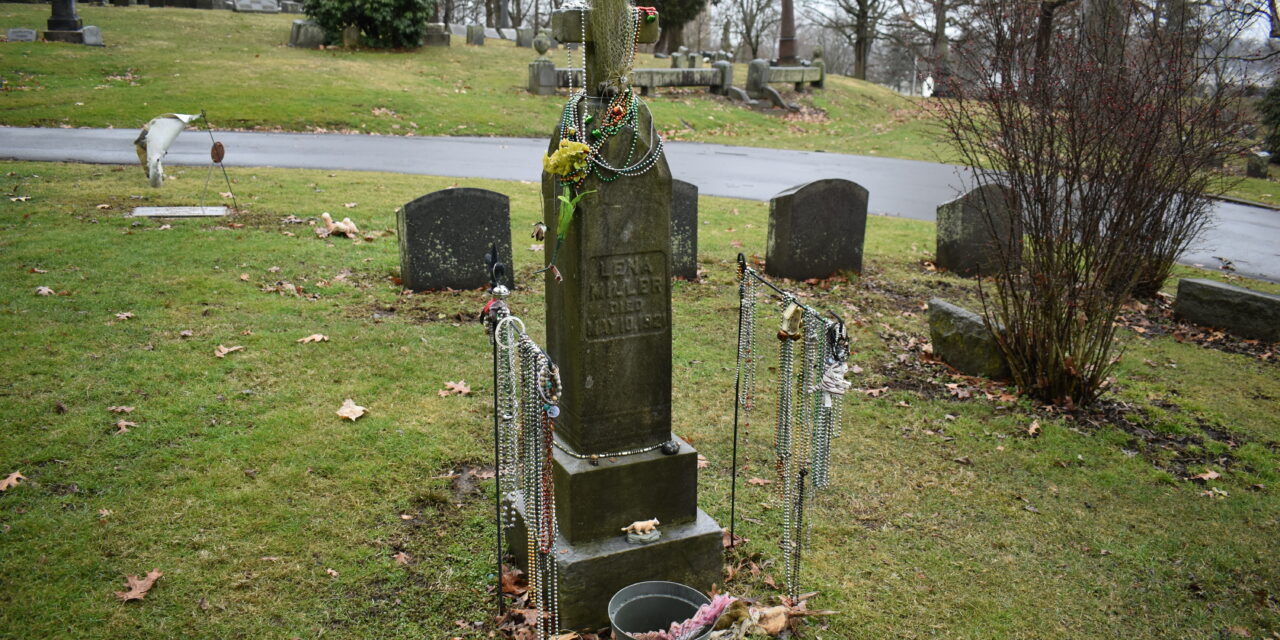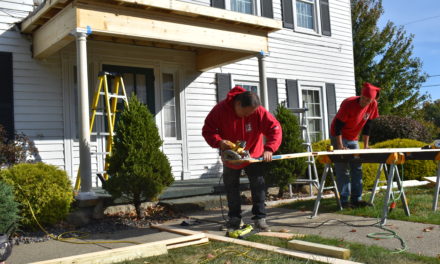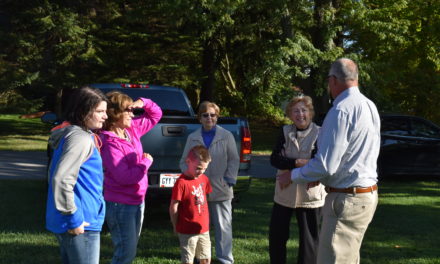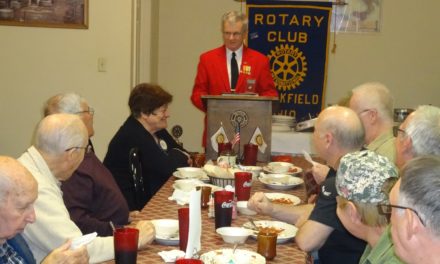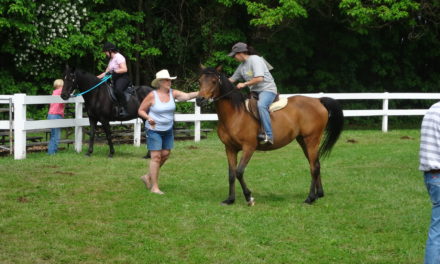One of the Shenango Valley stories that generated headlines in its day and has legs to the modern day is the death of Lena Powuna Mitchell Miller in 1921.
Although Miller is still referred to as the “gypsy queen” or “gypsy princess,” Miller had no connection to royalty, said Carol Novosel, who gave a talk on Miller Jan. 12 for the Brookfield Township Historical Society.
“She was a mother of seven, a fortune teller who died at 32 years of age of pneumonia because she just had to keep working,” Novosel said.
That doesn’t mean her story is any less intriguing.
“If you put together her clan, her being here, the huge funeral and her story, it’s fascinating,” said Novosel, who had researched and presented on Miller for Sharon Historical Society tours of Oakwood Cemetery in Hermitage, where Miller is buried.
As a people, the Romani – of which Miller was one – originated in India and migrated to Persia and then Europe, coming to the Americas as early as Columbus’ third voyage in 1498, and then in the 1600s as slave labor. The Romani started migrating to the United States of their own volition in the 1750s to flee European persecution and economic hardship. This history is outlined in a Harvard University study from 2020, called “Romani Realities in the United States: Breaking the Silence, Challenging the Stereotypes.”
Called “gypsies” – a term corrupted from “Egypt,” one of the places they migrated through during their history – the Romani became a nomadic people who nonetheless contributed to the cultures they encountered as entertainers, and their lasting impact is seen in belly dancing and Flamenco dancing, Novosel said.
However, they also gathered a reputation as thieves and tricksters.
“They learned their ways because they were ostracized,” Novosel said.
The Romani have been persecuted throughout their existence, and Hitler killed hundreds of thousands in World War II.
Prior to the war, groups of Romani traveled throughout the United States.
“My grandmother in the coal mines outside of Punxsutawney said you always gave them a chicken when they knocked at your door because, if you didn’t give them a chicken, they’d come back at night and take two,” said Novosel, of Brookfield.
It’s said that the Romani marked certain houses to tell others of their kind whether the inhabitants were helpful or not, Novosel said.
In the Shenango Valley, the Romani would camp in the area of what is now Route 62 and Standard Avenue in Masury, and in Sharon on property that is now where the Salvation Army is located, Novosel said.
Fred Sydlowski of Brookfield said his mother told him stories of gypsy encampments behind the former GATX property in Masury.
 Miller came to town as a circus fortune teller.
Miller came to town as a circus fortune teller.
“By the time she came to Sharon, she was very ill with pneumonia,” Novosel said.
Miller died May 10, 1921. Having no permanent home, she was buried where she died, Novosel said.
For the Romani, funerals were a big deal, and Miller’s attracted people from as far away as Canada and Texas, Novosel said.
“Whenever there was a big funeral, that was kind of their reunion to all get back together,” Novosel said.
Miller was laid out at the Romani encampment at Clark Street and Sharpsville Avenue in Sharon, Novosel said. “Oak casket, silver ornaments, white satin lining, and she was in bright silk garments. Spectators paid to walk past the coffin.”
The funeral attracted an estimated 1,000 spectators for its service that “was a combination of Roma tradition and Orthodox funeral service,” Novosel said. It’s estimated that some 5,000 watched the funeral procession from Clark Street to Oakwood.
The casket was opened at the grave site, and the Romani threw coins and trinkets – and maybe gold – into the casket. A stone slab was put over the casket before the dirt was filled in to prevent grave robbing.
“For six months, somebody was beside her (grave) all the time,” Novosel said.
To this day, people still leave items on her grave, such as Mardi gras beads, plastic flowers, bells, toy and stuffed animals, decorated rocks and coins.
“When I give my talk, somebody will come up and say, ‘But, you know, she’s here with you. I saw her over there,’” Novosel said.
She added that a man once admitted to her that he leaves quarters on her grave.
“’I just like the whole idea of it,’” she said he told her.
The tombstone now seen on Miller’s grave is the second, a Romani traditional stone, Novosel said.
“Her original tombstone is in somebody’s garage” on the West Hill, Novosel said. “Many, many people have seen it, but they won’t give it up.”

